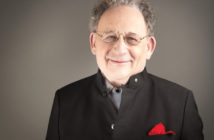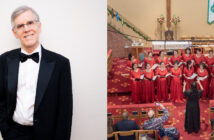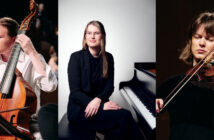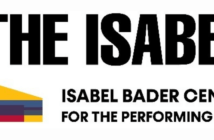
This page is also available in / Cette page est également disponible en:
![]() Francais (French)
Francais (French)
In the West, the possession of absolute pitch (AP) – the ability to identify and/or produce a pitch without a reference pitch – is met with admiration and envy. No wonder, seeing as the prevalence of AP possessors in Canada and the United States is estimated to be 1 in 10,000. Even in university music programs, AP possession features as a mere 9% among students of non-Asian heritage. Compare this to 90% among students from China studying in North America. Western scholars have long attributed this “Asian advantage” to genetics and then, for the past 20 years, the “advantage” of speaking tonal languages in childhood.
However, a study that I conducted at the Eastman School of Music (Rochester, New York) under the supervision of Professor Ellen Koskoff has found evidence that casts doubt on these theories. Instead of administering computerized tests and quantitative surveys, as has been the convention of other scholars, I took the ethnomusicological approach of conducting one-on-one interviews. The in-depth conversations with Eastman students hailing from China, Korea and the United States ultimately challenge not only the theories on how AP is acquired, but the concept of AP itself.
The Chinese Conservatory Paradox
The story begins with the discovery of a little-known paradox at music conservatories across China. Conservatories there are typically split into two parallel sectors: one for Western music and another for traditional Chinese music. According to the interviewees who came to Eastman from pre-college conservatory programs in China, almost everyone in the Western music sector has AP. However, it comes as a disarming surprise that the Chinese interviewees all reported that AP is “just as rare as it is in North America” within the traditional Chinese music sector. How can it be that there is such a striking difference of AP occurrence in an environment where almost every variable – genetics, language, age, rigour of training – is identical?
The pervading cultural attitude in China towards AP is that it is a trainable skill. Among the Chinese interviewees, AP did not even have a separate name, but was referred to simply as “having pitch.” In order to “have pitch,” Chinese students in the Western music sector undergo an ear training curriculum of several years that focuses on singing in fixed-do solfège, visualizing notes on an imaginary keyboard or staff, and writing out increasingly complex music dictations. Youngsters may enter pre-college programs without AP, but by graduation, “having pitch” is as commonplace an expectation for Chinese students of Western music as being able to sight-read.
The idea that AP can be learned even if one is not born with it is further substantiated by the paucity of AP occurrences in the traditional Chinese music sector. Here, AP is unnecessary and even burdensome, because Chinese music prioritizes being able to freely transpose and is notated in relative values. Consequently, students in this sector can manage such impressive aural feats as identifying microtonal intervals, but AP remains a rare ability.
Godification Complex
The Chinese conservatory paradox shows that if a skill is valued enough by a group, then that group will pursue training until it becomes ubiquitous. If, indeed, AP can be learned, why then are there so few musicians in the West with AP?
Western zeal for AP has given rise to what I call a “Godification complex,” which has idolized rather than popularized this skill. The attitude towards AP is so glorified among Westerners that AP is colloquially known as “perfect pitch.” The American interviewees, some of whom had AP themselves, spoke of AP as a “gift,” a mark of “talent,” an act occurring “without effort” and “as though by magic.” In all, AP has been lifted to a place so sacred that instead of training for it, people who struggle with identifying pitches without reference are told to give up before they have begun to practice. From the beginning of their musical education, Western children born with AP are sorted into an elite group in which their acuity of identifying pitches is honed even further. For everyone else, there is relative pitch, which, because it is learnable, is implicated as a lower-grade alternative.
Mind Over Culture
Western theorists have drawn a cutoff line for AP at the semitone, but in reality, aural skills exist on a spectrum. One musician might possess aural accuracy within a fifth, while another might be able to identify pitches down to the quarter-tone. Hence, the line that divides AP possessors from non-possessors proves both meaningless and limiting: It is meaningless because it is based not on anything to do with cognitive or aural ability, but rather on one culture’s arbitrary definition of the smallest musical interval. It is limiting because it bars the people from one side of the line from crossing over to the other.
The “Asian advantage” coined by other scholars is also a self-sabotaging and inaccurate designation. Asian students do not actually have any inherent advantage over their Western counterparts. The only benefit they have is cultural: Theirs is a culture that is not obsessed with the AP cutoff line, but rather believes in each musician’s potential for growth. Therefore, the dearth of AP in North America can be ameliorated with, foremost, a culture-wide change of attitude toward this skill. Indeed, AP is available to all who dare to seek it with audacity and deliberate, hard work.
This page is also available in / Cette page est également disponible en:
![]() Francais (French)
Francais (French)















